When failed transfer can occur?
A failed transfer indicates that the system could not process some of your files or folders during cloud to cloud movement. There are numerous reasons why this can happen. The most common issues are:
- Conflict: There is already a file or folder with the same name in the target location as in the source. This requires manual review and intervention.
- Invalid Name: The source file or folder has an invalid name in the target drive (e.g., OneDrive forbids characters like
* : < > ? / | "). This issue also needs manual review and intervention. - File Not Found: If a file or folder was not found during the transfer, please contact support unless you intentionally removed it.
- Malware Detection: Files marked as malware by Google Drive cannot be copied and will cause a failed transfer.
- Insufficient Space: There is not enough space available in the target drive.
- Timeout: Too much data movement causing a timeout. This can be due to cloud storage traffic quota or UnifiDrive bandwidth capabilities. In this case, the transfer can be retried as a failed transfer.
How to fix failed folders operations?
Let’s assume that you would like to move all your document files from Google Drive to OneDrive.
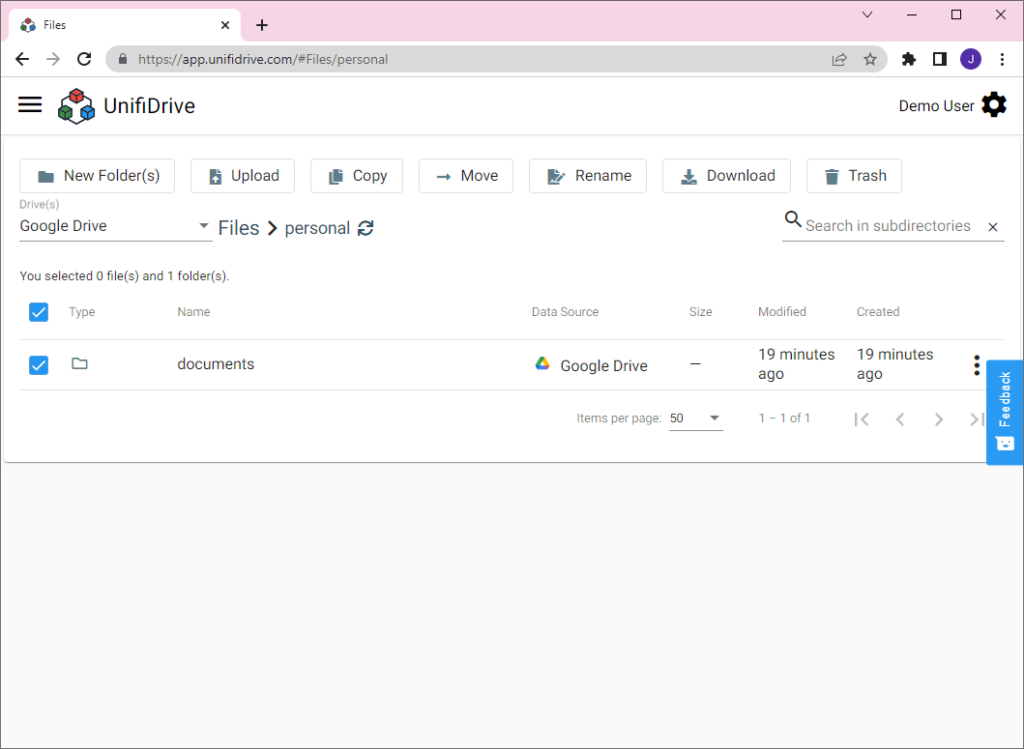
Choose a location in the target drive that already contains a folder with the same name as the selected folder in the source drive (here “documents”).
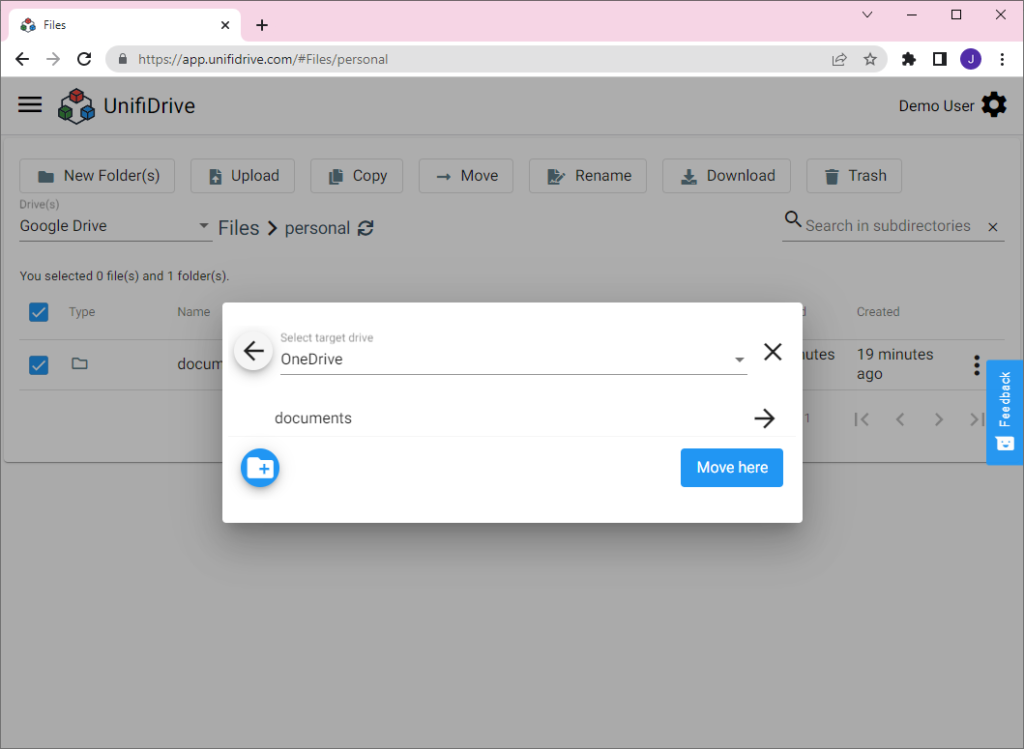
Open the transfer after a while and you will notice that the transfer failed and there is one file operation with an error stating “Conflicted”.
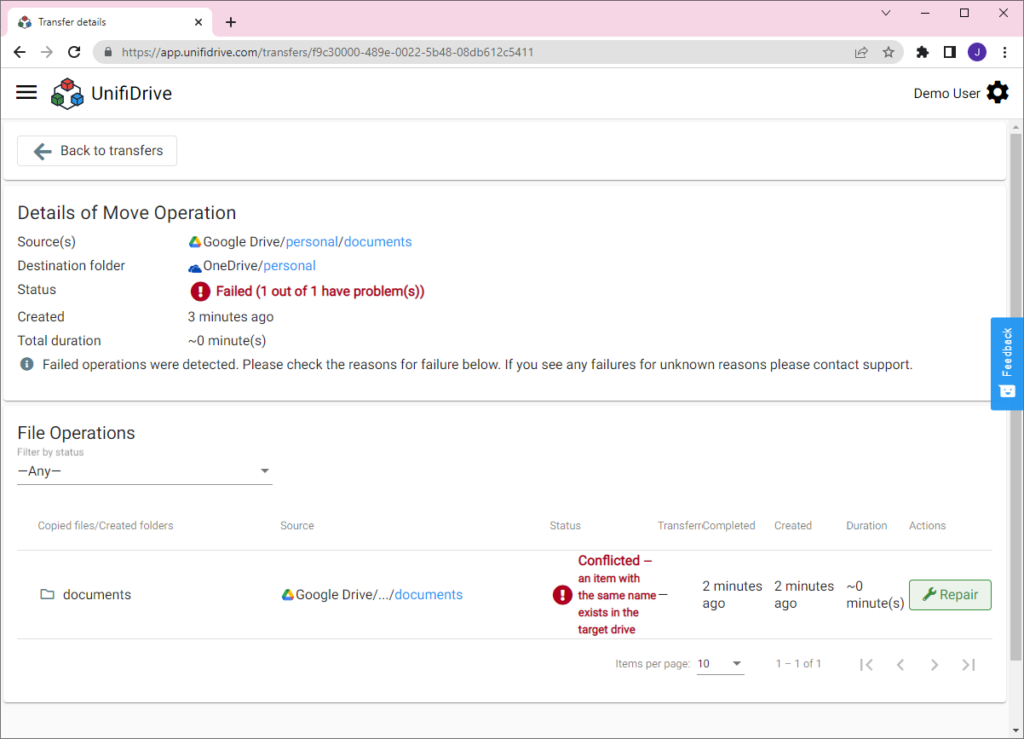
You will see a small green button next to the status named “Repair”. This indicates that manual intervention can fix the problem. Click this button to choose an action to fix the particular problem.
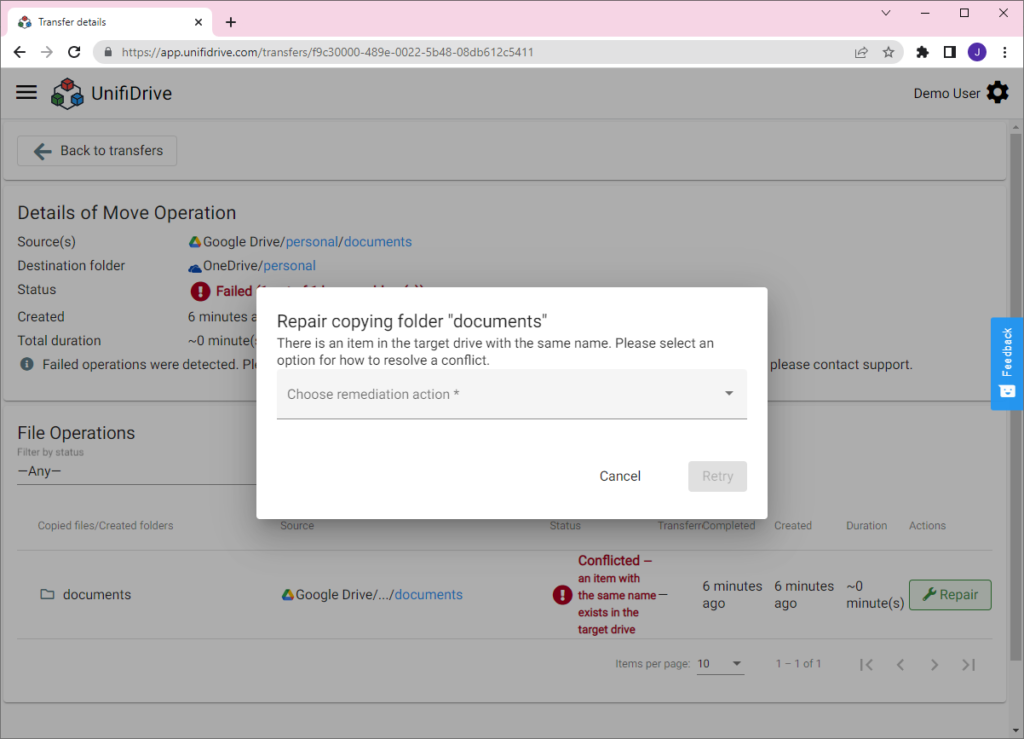
Select a remediation action that suits your need. For folders, you can choose to keep both folders separately, or skip the source folder, or merge the contents of the source folder and the target folder.
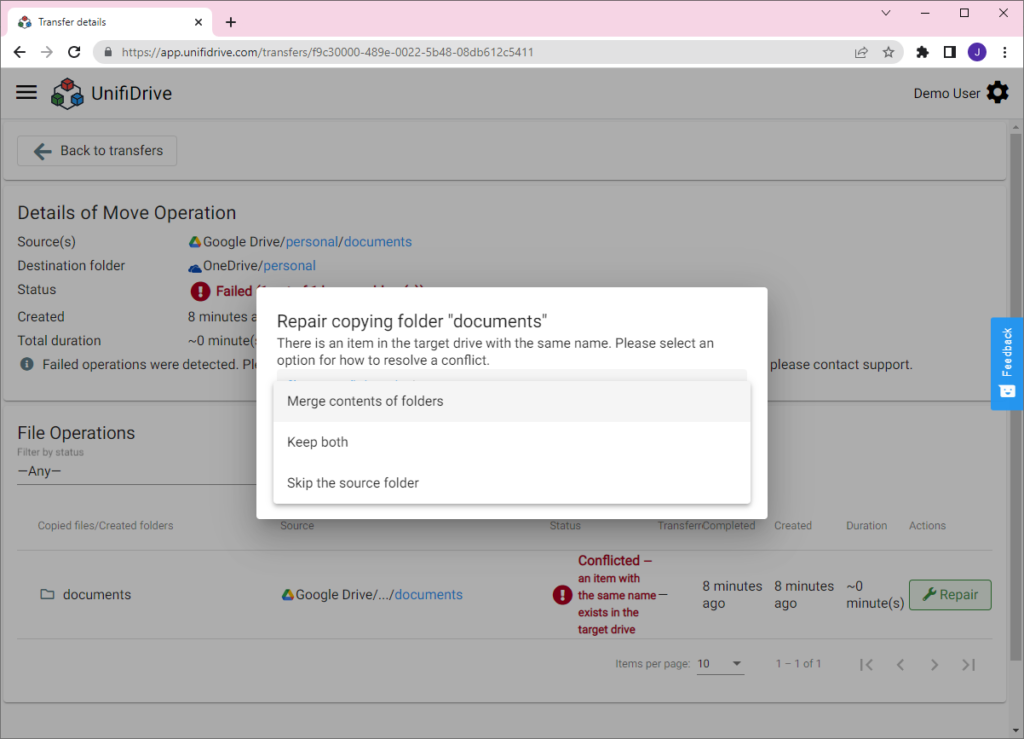
If you choose to fix by merging then select the option “Merge contents of folders”. This will retry the file operation, and files and folders from the target drive will be placed into the source folder keeping the existing file and folders from the source drive.
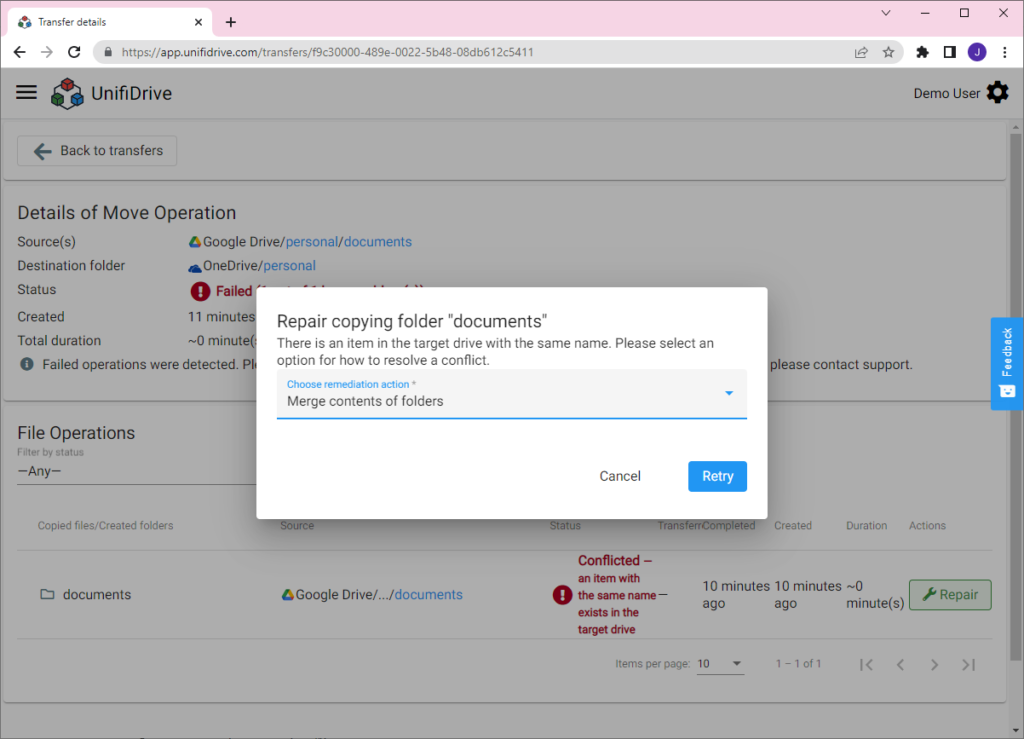
After some time, the folder operation should be retried and should be successful. The process of detecting files and folders from the source drive continue, meaning that newly detected file and folders will be processed.
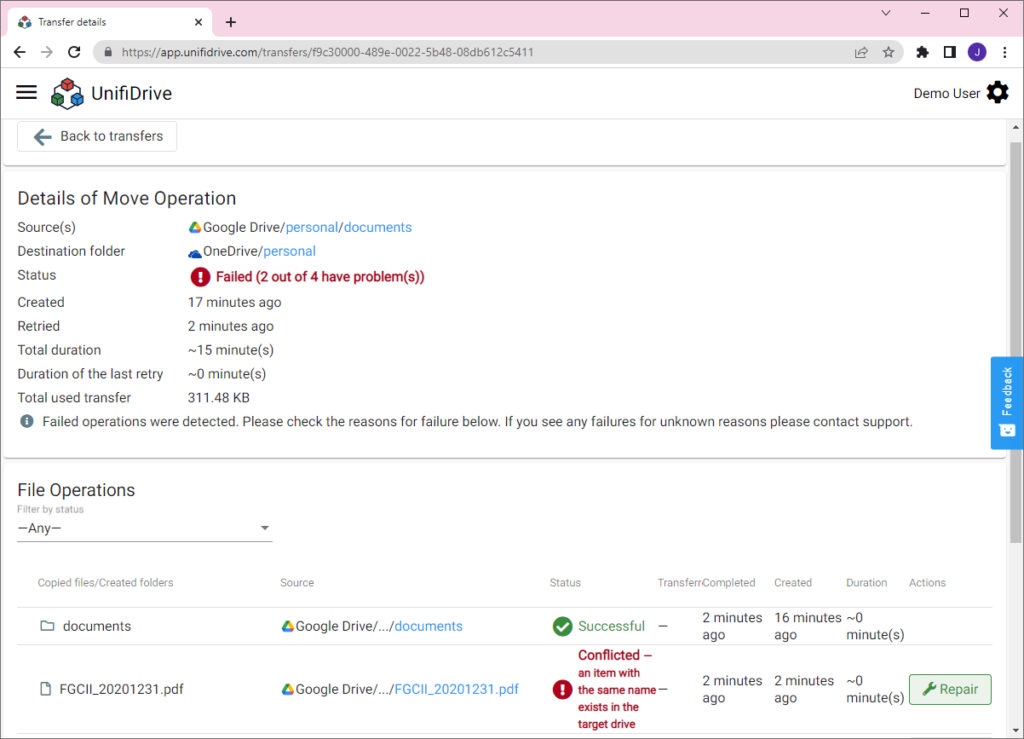
How to fix failed file operations?
If you encounter a failed file operation with an available “Repair” button, you can manually fix these failed files. Click on the “Repair” button for the first file operation.
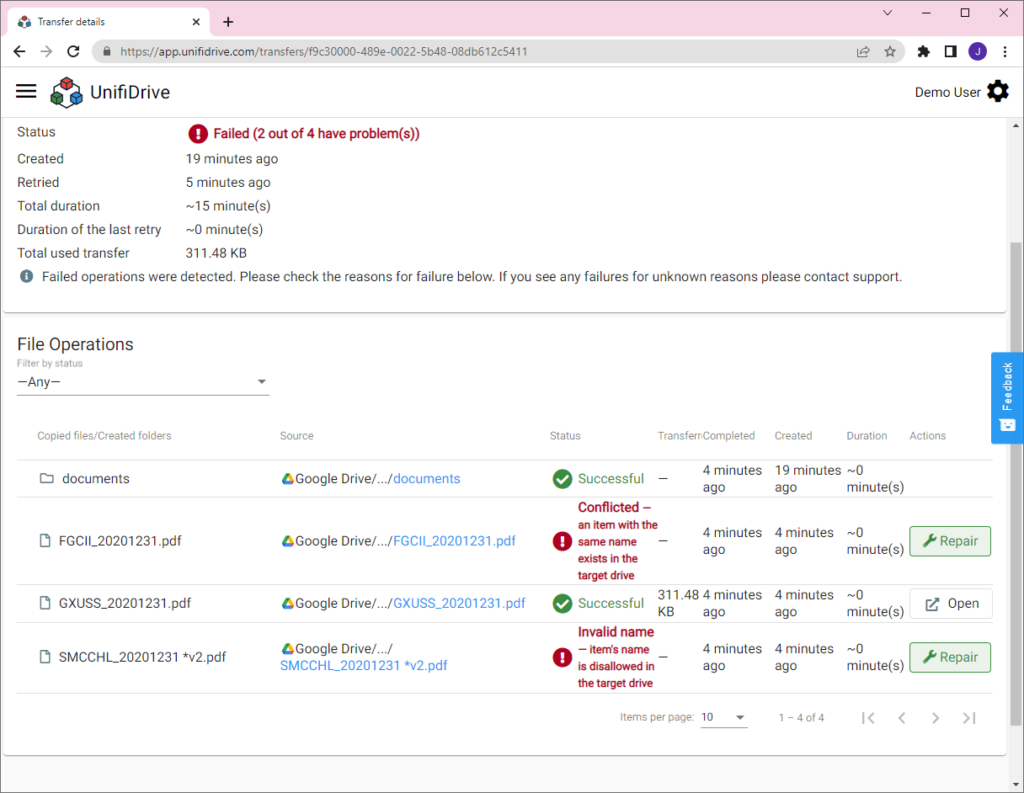
The same technique applies to files as it does for folders. After clicking the “Repair” button , a popup will appear with a remediation action needed to fix the file operation.
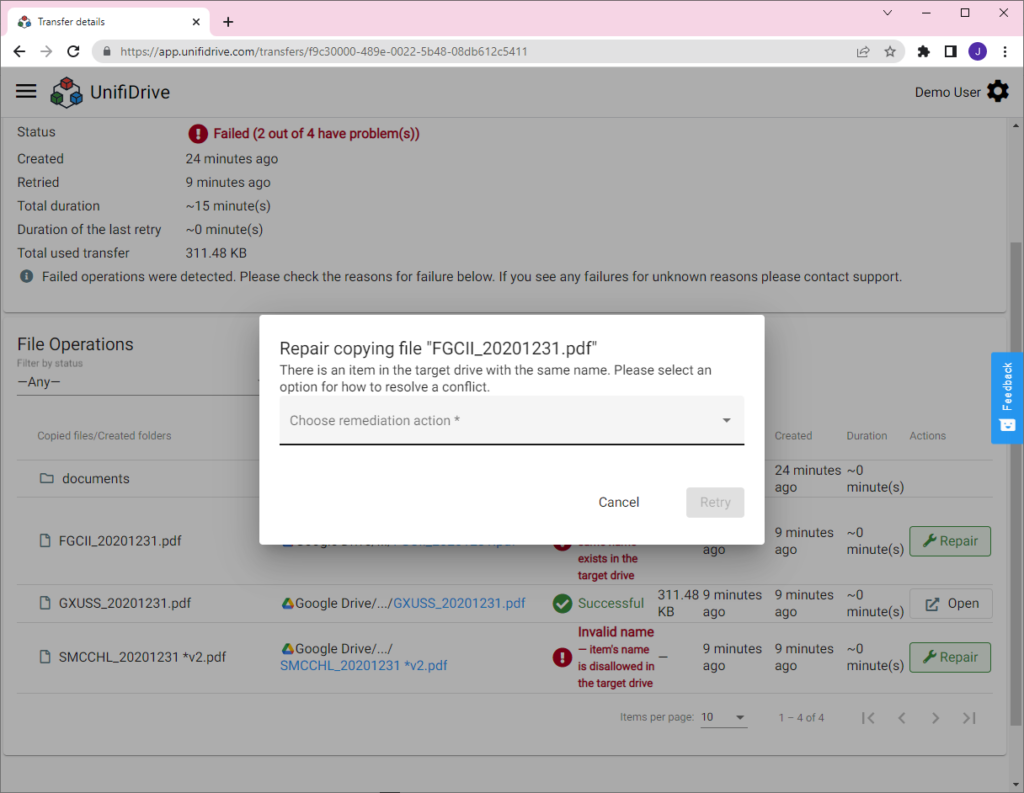
To fix conflicted files with the existing files in the target drive, choose an action. Options include skipping the source file, keeping both files, or replacing the content in the target drive with the content from the source drive.
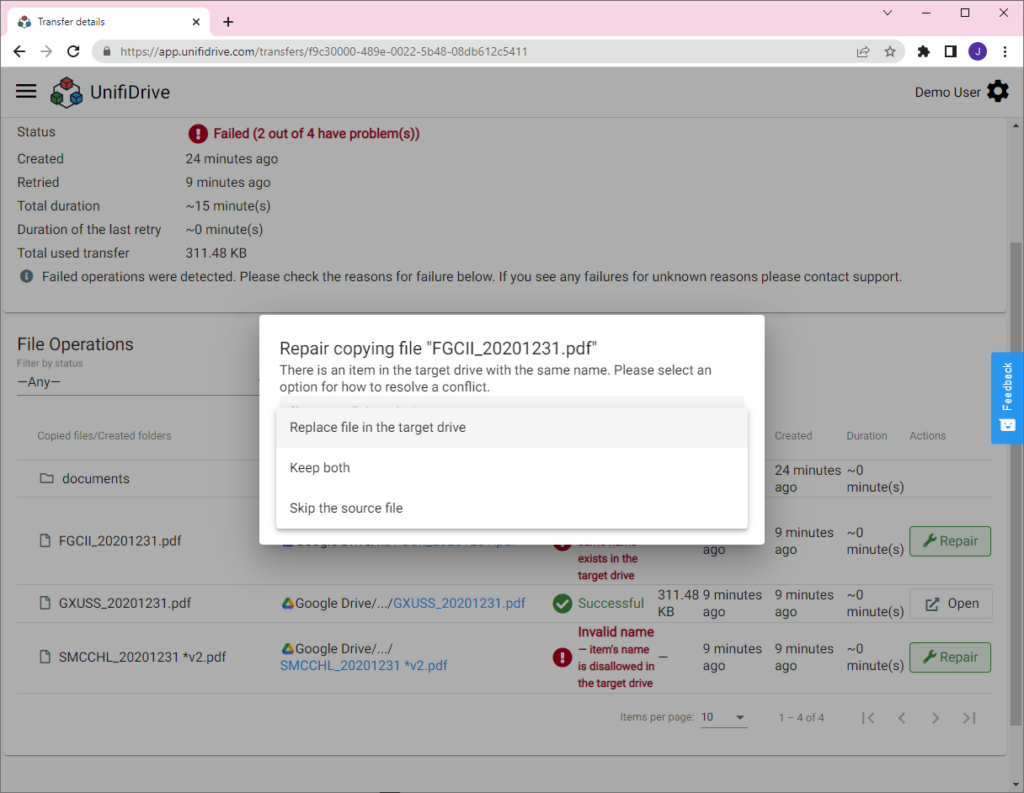
Click “Retry” and wait for a while. The file will be processed again and should display “Successful” status.
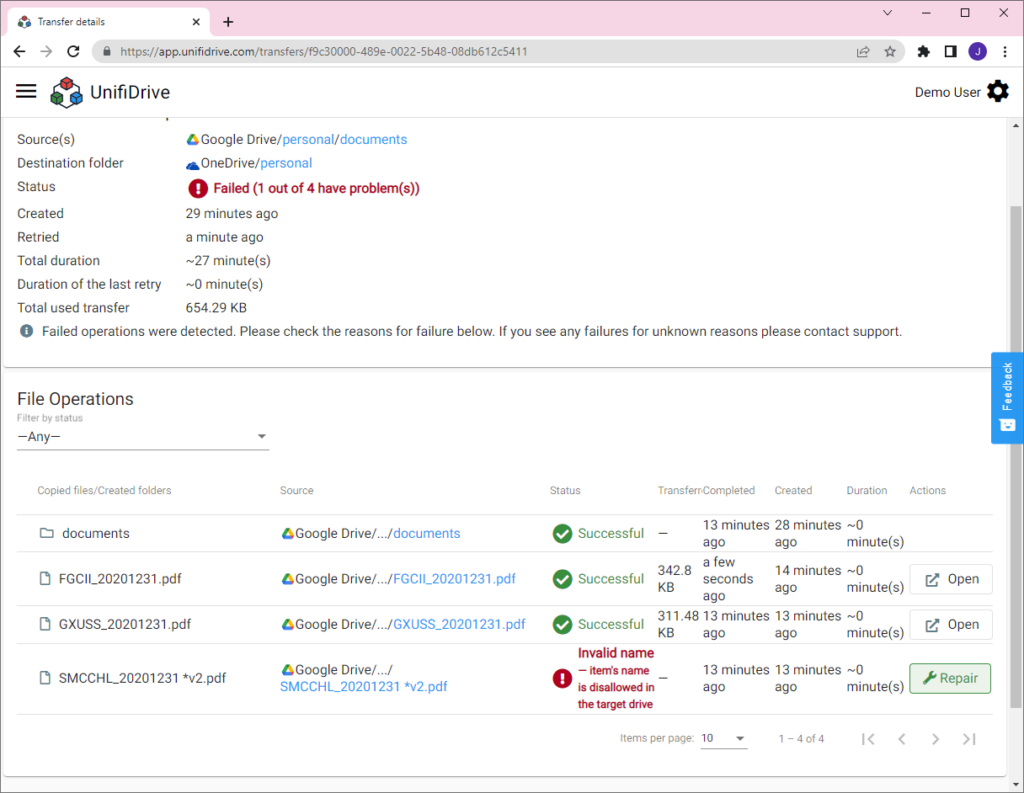
Sometimes, when sending files from a less name-restrictive cloud drive (e.g: Google Drive) to more name-restrictive cloud storages (e.g: OneDrive), you may encounter a failed file operation due to an invalid name error.
The method of fixing this issue is the same as for others. Click the “Repair” button as choose the appropriate action.
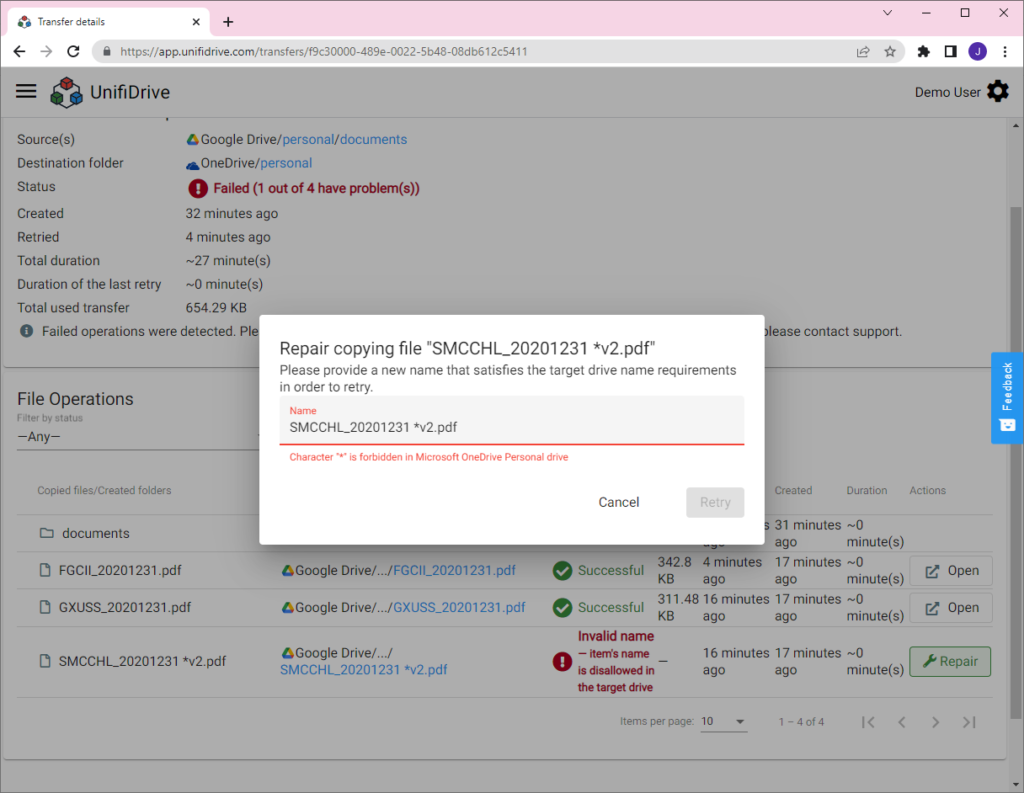
To resolve the issue, provide a name that is allowed in the target drive. In the example of OneDrive forbidding the use of “*”, the character needs to be manually removed or replaced. Once you have a valid name, click “Retry.”
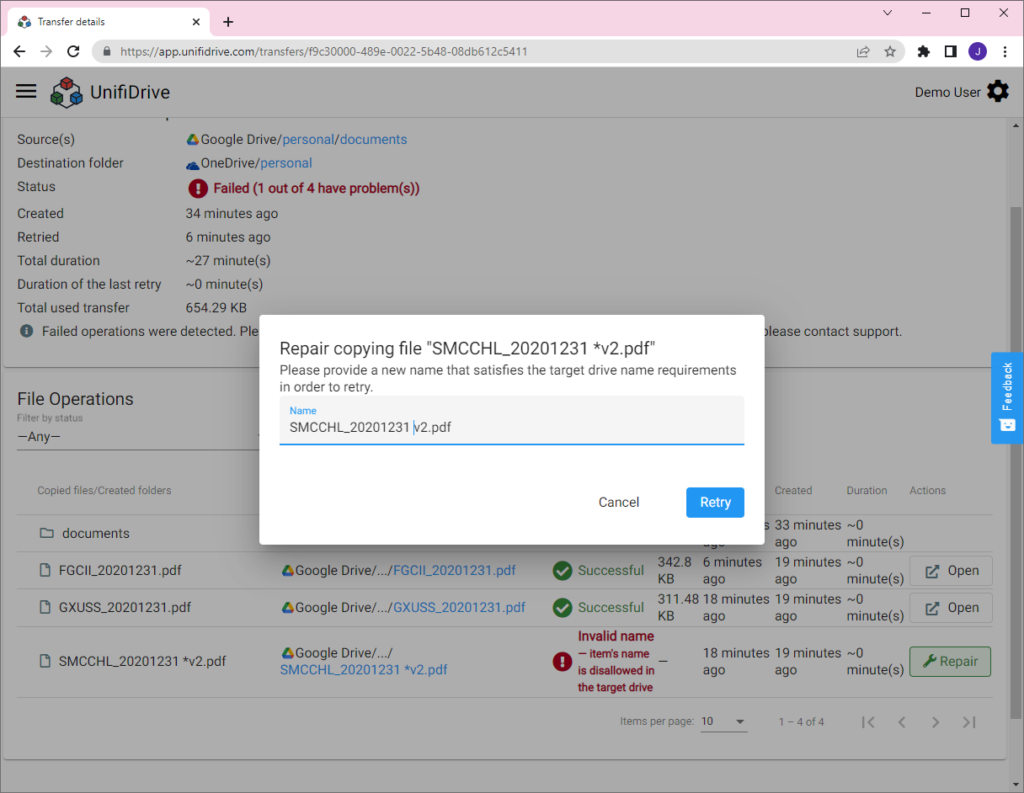
After some time, you will notice that your failed file operation will is fixed, as well as the entire transfer if you address all the issues.
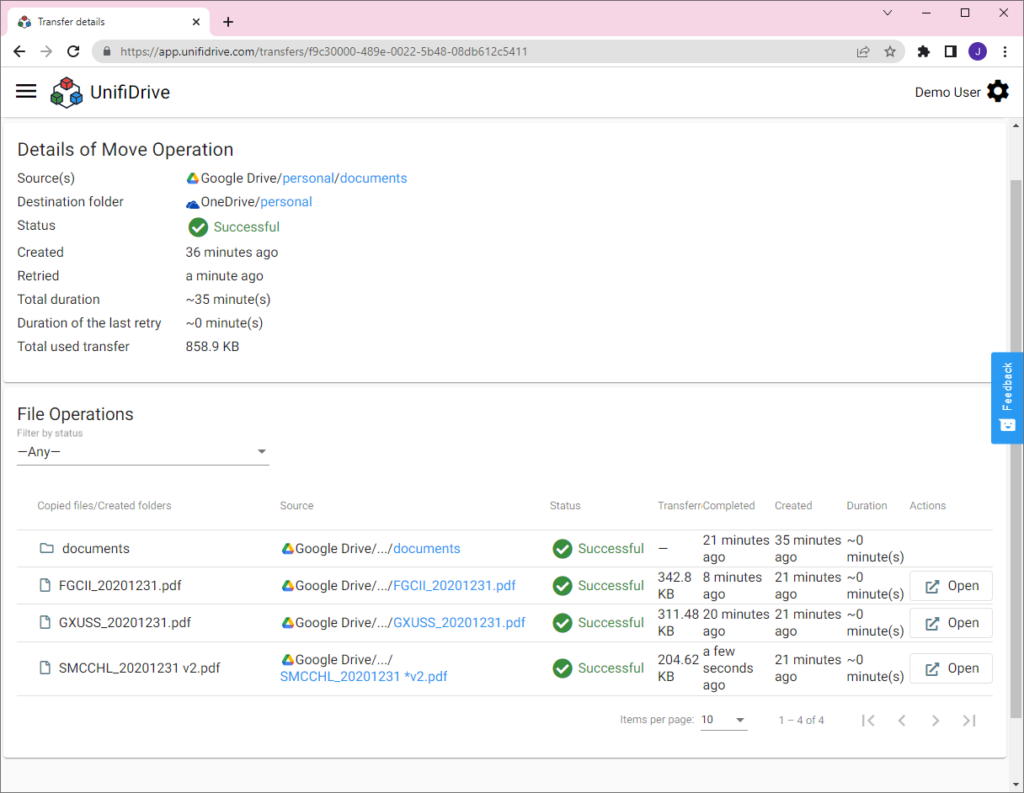
Learn more about moving files:
